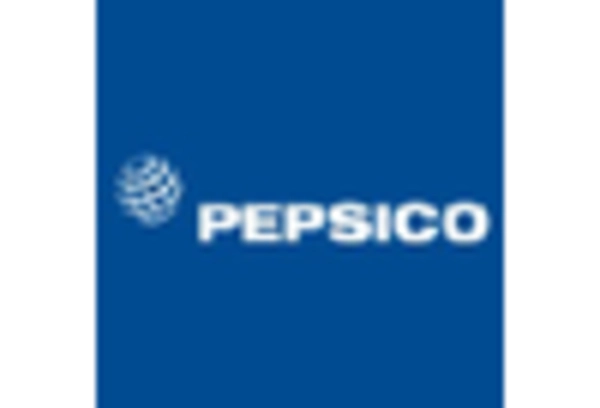E-commerce Expansion
The rapid expansion of e-commerce platforms is transforming the way consumers access superfoods, serving as a crucial driver for the superfoods market. Online shopping offers convenience and a wider selection of products, allowing consumers to explore various superfood options from the comfort of their homes. In the US, e-commerce sales of health foods, including superfoods, have surged, with estimates indicating a growth rate of around 20% annually. This shift towards online purchasing is likely to continue, as consumers increasingly prefer the ease of ordering products online. Consequently, the superfoods market is expected to benefit from this trend, as more consumers discover and purchase superfood products through digital channels.
Influence of Social Media
The influence of social media on consumer behavior is a notable driver of the superfoods market. Platforms such as Instagram and TikTok have become vital in shaping dietary trends, with influencers promoting superfoods as part of healthy lifestyles. This visibility has led to increased consumer interest and demand for superfood products. In the US, social media campaigns featuring superfoods have resulted in a significant uptick in sales, with some brands reporting growth rates of over 30% following successful marketing initiatives. The power of social media to create trends and drive consumer engagement suggests that it will continue to play a pivotal role in the evolution of the superfoods market.
Health Consciousness Surge
The increasing awareness of health and wellness among consumers appears to be a primary driver of the superfoods market. As individuals become more informed about nutrition, they are actively seeking foods that offer health benefits. This trend is reflected in the growing demand for superfoods, which are perceived as nutrient-dense options. In the US, the market for superfoods is projected to reach approximately $25 billion by 2027, indicating a robust growth trajectory. Consumers are particularly interested in products that support immune health, digestive wellness, and overall vitality. This heightened focus on health consciousness is likely to continue influencing purchasing decisions, thereby propelling the superfoods market forward.
Innovative Product Development
Innovation in product development is a significant driver for the superfoods market. Companies are increasingly introducing new superfood products that cater to diverse consumer preferences, including snacks, beverages, and supplements. This innovation is not only about creating new flavors but also about enhancing nutritional profiles. For instance, the incorporation of ingredients like spirulina, chia seeds, and acai berries into everyday products has gained traction. The US market has seen a rise in superfood-infused items, with sales growing by approximately 15% annually. This trend suggests that consumers are eager for novel and convenient ways to incorporate superfoods into their diets, thereby stimulating growth in the superfoods market.
Rising Demand for Clean Label Products
The growing consumer preference for clean label products is emerging as a key driver in the superfoods market. Shoppers are increasingly scrutinizing ingredient lists and seeking transparency in food sourcing and production. This trend is particularly pronounced among health-conscious consumers who prioritize natural and minimally processed foods. In the US, the clean label movement has led to a surge in demand for superfoods that are organic, non-GMO, and free from artificial additives. Market data indicates that products meeting these criteria are experiencing growth rates of approximately 18% annually. This shift towards clean label superfoods is likely to continue influencing consumer choices, thereby shaping the landscape of the superfoods market.

















Leave a Comment